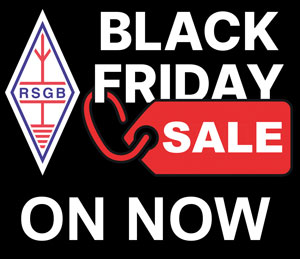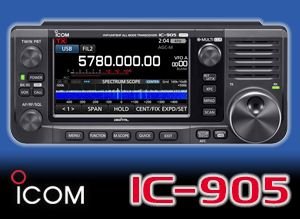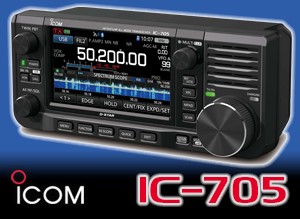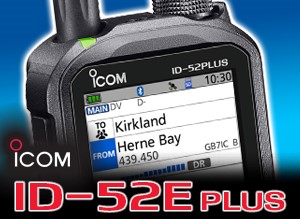3. Choosing Your First Contest
SSB contests have the advantages of being simpler to operate in and log but, particularly if you are limited, or choose, to operate at low power (10w), Data or CW may be best for you. The major drawback of some SSB contests is the level of QRM generated by other entrants as they compete for spectrum. In terms of ‘setting up’ (configuring hardware and software), SSB contesting is the most straightforward, followed by CW contesting. Data modes contesting requires a more complex hardware and software configuration, but once set up correctly is easy to use. Many experienced contesters prefer CW or Data contests, for the simple reason that over 12, 24 or 48 hours they are less tiring than using SSB.
OPERATING ADVICE
In all SSB, CW and Data modes contests, there are two basic techniques for making QSOs:
(a) Running – you remain on one frequency for as long as possible, periodically calling CQ with the aim of generating a ‘pile-up’ of stations that you can work rapidly one after the other. Running maximises your QSO total, but needs to be balanced by you working any ‘Multipliers’ that may be defined in the contest rules – these Multipliers may be elsewhere on the band.
(b) Search and Pounce (S&P) – you search the band, either by tuning around with your VFO or by clicking on DX Cluster spots (which moves your VFO to the frequency of the spotted station) to work new stations or new Multipliers. If propagation or activity in the contest is poor, S&P can sometimes allow you to make as many QSOs as you would trying to ‘Run’. S&P however depends on the station you tune into identifying themselves regularly – don’t rely on the accuracy of any DX Cluster spots.
Whether ‘Running a pileup’ or doing ‘Search and Pounce’, the two key elements are :
SPEED i.e. completing the QSO in the shortest possible time
ACCURACY i.e. ensuring that both you and the other station have exchanged and logged all the information correctly (callsigns, zone number, serial number, etc). You cannot be blamed for logging errors by the other station, but you should make every effort to ensure that your log is as accurate as possible.
SPEED
Over the years the speed of contest exchanges has increased, with the information exchanged pared to the bare minimum necessary. Obviously, you can say ‘hi’ to a friend, but most HF contesters just want to work your station quickly.
Below is a minimal SSB contest QSO, as in the major CQ WW SSB event held each October, with some explanatory notes :
G6XX : CQ Germany Six X-ray X-ray brief, clear phonetics (Golf is a weak phonetic for G), no need to say ‘CQ contest’
K3LR : Kilo Three Lima Radio
G6XX : K3LR 59 14 no phonetics – saves time
K3LR : 59 05
G6XX : Thanks (or Thanks G6XX) this single word ‘thanks’ means:
(a) I have all the information from you correct
(b) this QSO is over and you are inviting others to call you.
Don’t be put off by the brevity of this example of the minimum exchange – as a newcomer you can say as much extra as you like, but always think ‘do I actually need to say these extra words?’ – usually you don’t – the other HF contesters just want your callsign and exchange.
Accuracy – hearing and logging the received callsign and exchange correctly is arguably even more important than operating fast. Time spent stopping a pile-up and requesting a repeat is time well spent. Most contest organisers penalise these ‘busted’ callsigns or exchanges, so your submitted logfile must be as accurate as possible to avoid losing points.
More information about Data mode exchanges is available here.
Other important tips:
Practise your keyboard skills and make sure you are completely familiar with your contest logging software before the contest. You may have to correct or edit a logged callsign quickly so practising how to do this in advance will reduce your stresses during the contest.
In line 3 of the example above, the G6XX operator has saved time by saying ‘K3LR’ instead of ‘Kilo Three Lima Radio’. Newcomers to HF contesting will find this advanced technique a difficult habit to maintain – also some stations will be confused if you don’t reply with the same phonetics that they use. So, start off by using phonetics when you respond to a call.
If you call a station who is running a pileup and they respond with what they think your callsign (or the exchange) is, but you know they have it incorrect, don’t send a report – just repeat your callsign. Sending a report (even with your correct callsign) might make them think (wrongly) that they have your callsign correct.
NEVER repeat back what the other station sends you. (This is a bad habit that some beginners carry over from VHF contesting). If you are unsure of the information, just ask for a repeat. If you are as sure as you can be that both stations have all the information correct, move on quickly to the next QSO.
If running a pile-up, make sure you identify yourself by giving your callsign regularly. If the pile-up is intense, you don’t need to give it after every QSO, but if things are slow, you can give your callsign more often. RSGB HF contest rules require you to identify at least once per minute, or every three QSOs.
Persevere – don’t worry if things seem to be going badly – just keep working stations and you will be surprised at how your final score builds up over the contest period. Also, don’t worry if you make mistakes – everyone does when starting out in HF contesting – just learn from them and try not to repeat the same mistake.
Except for minor/local SSB contests, a good final score is achieved by working a balance of (a) number of QSOs made and (b) number of Multipliers worked.
The major worldwide SSB contests on HF are, by definition, competitive events – don’t be discouraged if someone ‘steals’ your frequency and ignores your complaints. Everyone has experienced this – just move frequency and keep going.









